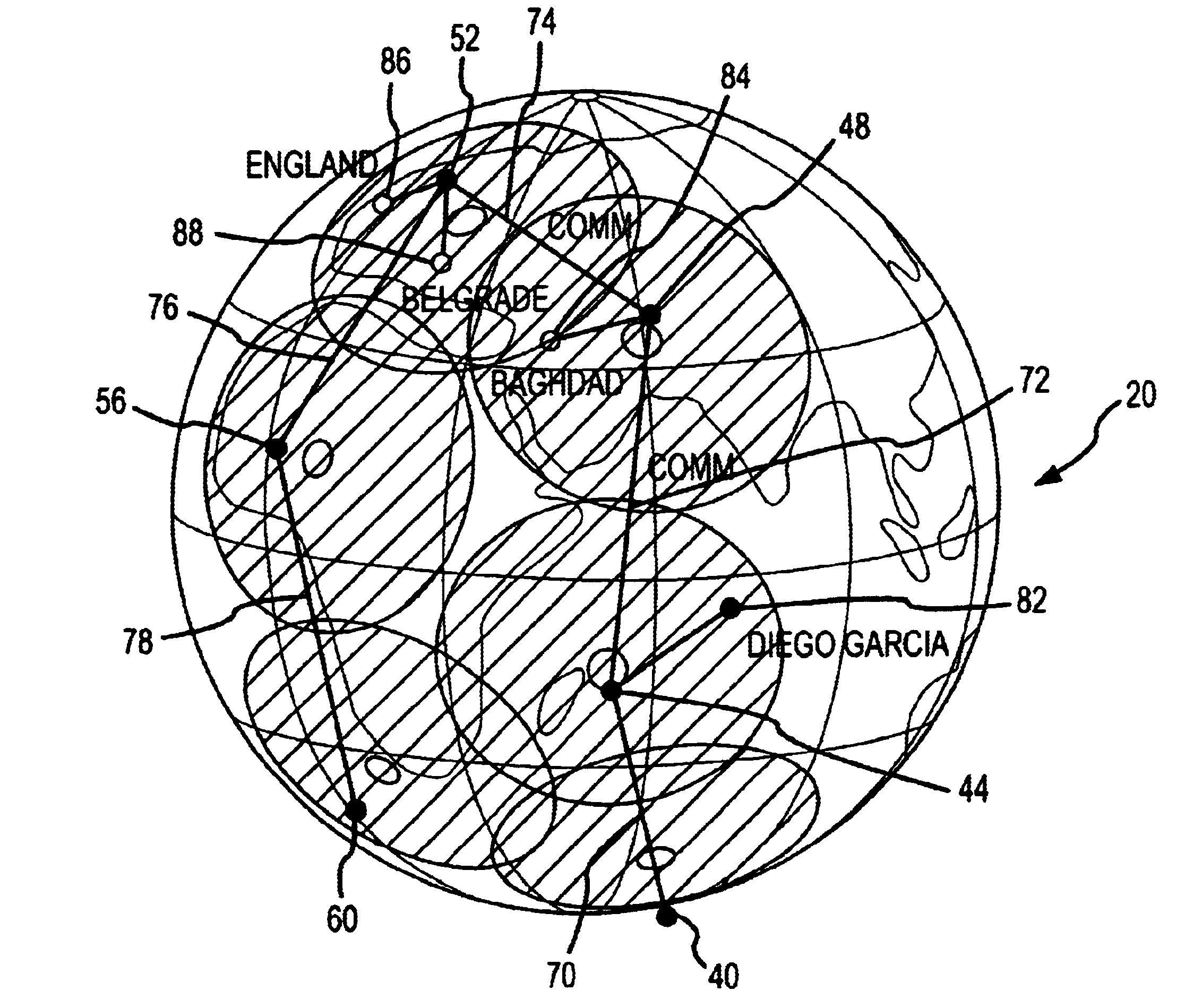Satellite constellation system
a satellite constellation and satellite technology, applied in the field of asymmetrical constellations of manmade satellites, can solve the problems of increasing the cost of satellite launch to the necessary geo altitude, increasing the cost of providing continuous access, so as to and increase the continuous access time of asymmetrical satellite constellations
- Summary
- Abstract
- Description
- Claims
- Application Information
AI Technical Summary
Benefits of technology
Problems solved by technology
Method used
Image
Examples
first embodiment
the satellite positioning system of the present invention is shown in FIGS. 3A-3D. In this two-dimensional projection of the earth 20 shown in FIG. 3A, six satellites and their respective fields of regard are shown. First, a lead satellite 40 and its field of regard (FOR) 42 are shown, followed by a first trailing satellite 44 and its respective FOR 46, followed next by another trailing satellite 48 and its FOR 50, followed by another trailing satellite 52 and its FOR 54, followed by another trailing satellite 56 and its FOR 58, then followed by the last trailing satellite 60 and its FOR 62. The FORs may be the area that could be seen by space-based radar (SBR) that may be located on the satellites to perform such functions as determining Ground Moving Target Indication (GMTI) data, for example. FIG. 3B shows these six satellites at a subsequent time in their respective orbits (roughly 30 minutes later). The ground tracks for each of the six satellites showing the path covered by th...
PUM
 Login to View More
Login to View More Abstract
Description
Claims
Application Information
 Login to View More
Login to View More - R&D
- Intellectual Property
- Life Sciences
- Materials
- Tech Scout
- Unparalleled Data Quality
- Higher Quality Content
- 60% Fewer Hallucinations
Browse by: Latest US Patents, China's latest patents, Technical Efficacy Thesaurus, Application Domain, Technology Topic, Popular Technical Reports.
© 2025 PatSnap. All rights reserved.Legal|Privacy policy|Modern Slavery Act Transparency Statement|Sitemap|About US| Contact US: help@patsnap.com



